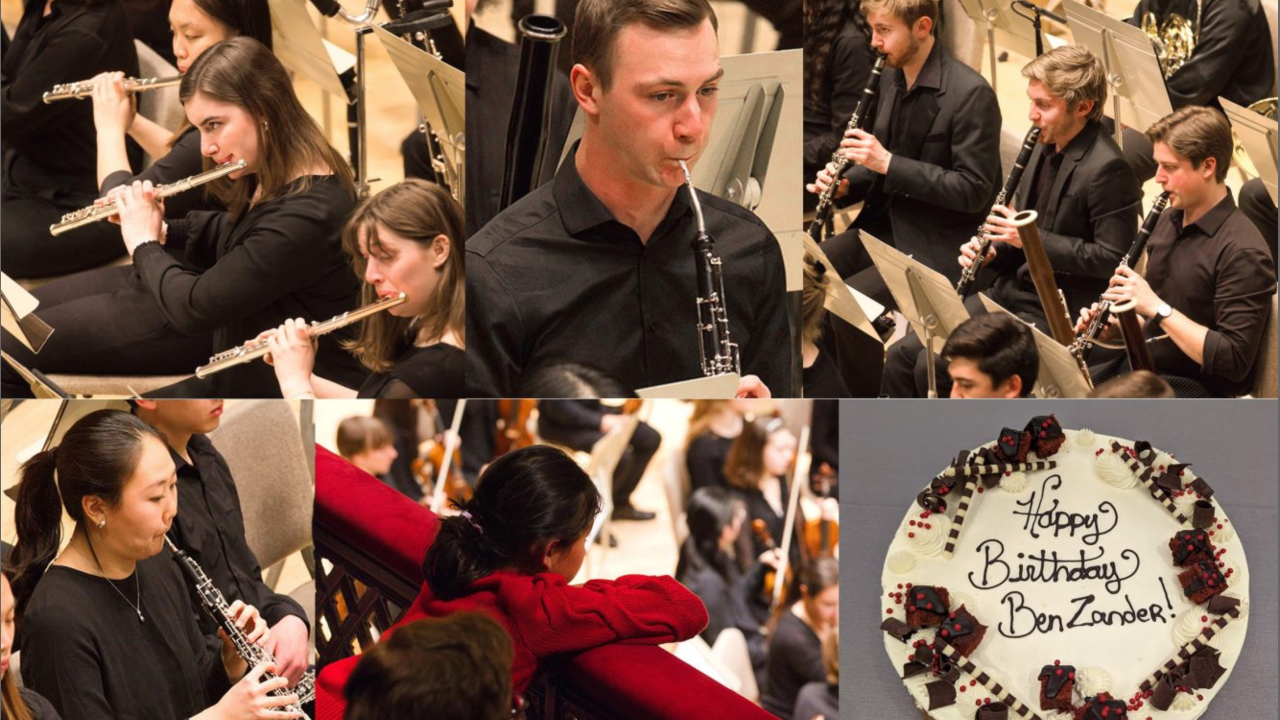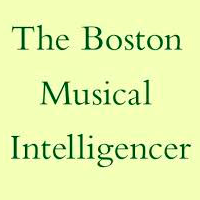A Night To Remember: Titanics Complete Voyages

Benjamin Zander celebrated his 84th birthday in the company of 2,000 Symphony Hall votaries last night, mounting a pair of warhorses with the visceral energy inherent in the mutual admiration and stimulation raging among the hormonally charged players in the Boston Philharmonic Youth Orchestra and their particularly inspired and inspiring leader. With half of its roster of 112 coming from local secondary schools (not including Walnut Hill or NEC Prep), it must be deemed a marvel how the BPYO’s titanic traversals of Bartók’s Concerto for Orchestra and Tchaikovsky’s Fifth Symphony garnered laurels in the large symphonic pantheon—not just within the context of this ten-year-old orchestra’s amazing history.

Cellist Brian Lee, a high school student, gazes at his leader
BMInt readers for the most part know the creation-resurrection story of Koussevitzky’s appearance at the hospital where the 62-year-old Béla Viktor János Bartók lay compositionally silent and dying. The Koussevitzky Foundation’s offer of $1,000 for a memorial to Olga Koussevitzky revived the composer; à la Lazarus he leapt up from his death bed to spend the last two years of his life on this commission and a few select other works.
The composer summarized the Concerto for Orchestra as follows:
The general mood of the work represents, apart from the jesting second movement, a gradual transition from the sternness of the first movement and the lugubrious death-song of the third, to the life-assertion of the last one… The title of this symphony-like orchestral work is explained by its tendency to treat the single orchestral instruments in a concertante or soloistic manner. The ‘virtuoso’ treatment appears, for instance, in the fugato sections of the development of the first movement (brass instruments), or in the perpetuum mobile-like passage of the principal theme in the last movement (strings), and especially in the second movement, in which pairs of instruments consecutively appear with brilliant passages.
Combining folk melodies, classical forms, tonality, and weird modes—a brilliant success from the time of its 1943 BSO premiere onward—the sprawling 40-minute, five-movement parade of exciting colorations must stand as the closest Bartók came to writing a symphony…and perhaps it really is one of the great symphonies.

French horn Graham Lovely
1. Introduzione. Andante non troppo – Allegro vivace: Well-oiled celli mysteriously painted the night scene, the glorious upper strings commented, lustrous violas took their mellow turn, the piccolo (and what amazing pianissimos Isabel Evernham drew again and again) impersonated the forest fauna, trumpets affirmed in burnished hues, a rolling timpani announced a slow buildup, violins seared in a powerful unanimous voice, harp and oboe conversed in the moonlight, transformations of color and weight ensued through masterful orchestration, a perfectly lined-up fanfare erupted with euphoria.
2. Giuoco delle coppie. Allegro scherzando: the side drum tattooed as tuba set up a moralistic brass chorale, which rapidly transited to a light, jazzy swagger, the side drum closed the circle.
3. Elegia. Andante non troppo: double basses then celli plus solo flute and oboe miraculously evoked an elegiac natural world, upper strings swirled and burned brightly in savage and tremendous tremolos and trills, the terrors ended in a ppp picolo solo.
4. Intermezzo interrotto. Allegretto: Zander’s somewhat fast tempo produced a wonderful offbeat waltz, a big tune returned in expressive violas then violins, in the second dance number the trombones gilded their blasts. (if this very engaged movement is an elegy to the departed Olga, then it is an optimistic one), a snake-charming duet was taken up by the eloquent flauboe pair.
5. Finale. Presto: began like a laboring steam locomotive, rails were then greased, animated fugata emerged and relaxed, perpetuum mobile was ginned up by brass blasts, harp played interlude, general combustion through alternate coda took no prisoners.

Isabel Evernham, piccolo
The Concerto for Orchestra, besot with memorable tunes, episodes, developments, and a witches’ cauldron of steaming, squirming, and struggling elements, never relaxed its hold on us. Zander’s broad, rapturous tempi felt ever apt. Lordy what a triumph.
Tragic, fateful, profound, tuneful, at times balletic, Tchaikovsky’s Fifth Symphony, a cyclical mix of immortal themes, came to the ecstatic full house in a visceral, and totally committed show of virtuosic engagement. Taken on Tchaikovsky own terms without apologies or, modernizations, it opened at a tempo that allowed the solo clarinet (Cole Turkel) to breath over the soulful expression of the celli. The solemnity also seemed to anticipate the torment that would follow. At times the first movement felt like a progression of ballet numbers; the duets trios, and corps de ballet, scampered in their arabesques and attitudes; these always flowed, but tragedy eventually eclipsed the glimpses of life’s pleasures.
In the Andante cantabile second movement, Zander placed his left hand on his throbbing heart as French horn soloist Graham Lovely wrung deep, somber, and tragic longing from his astonishing solo. Zander then traced arcs of yearning with his left arm. Embracing and immersing themselves in the Romantic style without any embarrassment, the strings, at times streaming with parallel shafts of light, also executed many juicy (and formerly guilty pleasure) slides. Gusto intensified. Trombones and tubas wowed with compelling blasts before quiet returned. Then we heard those pizzes…the oboe gracefully minuetted and the violas gave forth in theatrical melancholy…every gesture mattered…sinuousness, sensuousness, and yearning… finally the motto theme returned with sweet restraint. This might have been the single most successful movement I ever heard from this orchestra…or any orchestra.

The third movement’s waltzes transported us into another balletic reverie, rhythmically concise and heartfelt at the same time, before fate intervened in the finale. And how martially and inevitably the forces worked out these morphing and stirring themes. At the triumphant moment, after a seemingly final set of chords, a pause ensues. Sometimes this results in premature applause. As if to prevent that Zander gave the upbeat for the introduction of the fate theme a bit too early for the experienced concertgoer sitting next to me. “Not yet,” she inveighed in a stage whisper before the music resumed and the rousing presto galloped to the double bars, knocking down the barn doors. Shrieks of delight in the solo and sectional callouts capped this great night in the life of the thriving BPYO.
Click here to listen to Bartok’s Concerto for Orchestra.
Click here to listen to Tchaikovsky’s Symphony no. 5.
 Lee Eiseman - The Boston Musical Intelligencer
Lee Eiseman - The Boston Musical Intelligencer